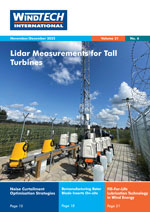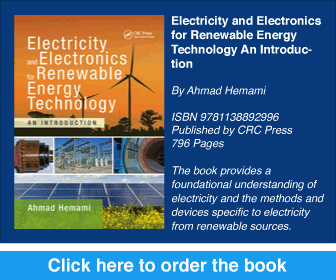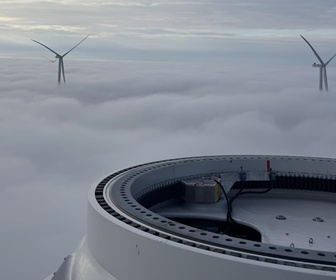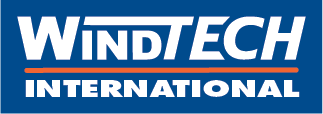- Category: Articles
The Concept of the PrimAero Wind Sensor
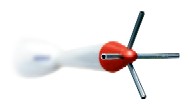 Have you ever seen standard meteorological wind measurement devices like wind vanes or anemometers on aeroplanes? Certainly not. The most important reason is that the measurement bases would be wrong. When you compare measurement devices, the most obvious differences are the measurement principles they are based on (i.e. the use of laser, sound waves or other techniques to detect a signal and the physics behind this). But this is only one aspect. Even more interesting than 'how' a device works is 'what' it measures. Clarity about the measurement target is the most important factor to consider for any measurement device. From this point of view, the PrimAero wind sensor is unique for wind measurement on wind turbines because it not only measures the wind speed but also the wind pressure as a whole.
Have you ever seen standard meteorological wind measurement devices like wind vanes or anemometers on aeroplanes? Certainly not. The most important reason is that the measurement bases would be wrong. When you compare measurement devices, the most obvious differences are the measurement principles they are based on (i.e. the use of laser, sound waves or other techniques to detect a signal and the physics behind this). But this is only one aspect. Even more interesting than 'how' a device works is 'what' it measures. Clarity about the measurement target is the most important factor to consider for any measurement device. From this point of view, the PrimAero wind sensor is unique for wind measurement on wind turbines because it not only measures the wind speed but also the wind pressure as a whole.By Klaus Ritzinger, Head of Research & Development, IXIST Messtechnik, Germany
- Category: Articles
Simulation of Electric Field Distributions Caused by the Lightning Leader
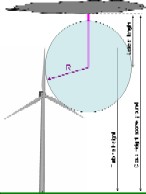 Based on the lightning leader model of Cooray et al., the electric field distribution on a wind turbine induced by the leader has been simulated using the Finite Element Method (FEM). Because of its dimensions and complexity, the wind turbine has been simplified to its lightning protection system and by simulating only one blade. The derived electric field distribution has then been used as input for a detailed blade-tip model. The detailed model can be used to analyse the influence of the down-conductor shape on the electric breakdown emergence.
Based on the lightning leader model of Cooray et al., the electric field distribution on a wind turbine induced by the leader has been simulated using the Finite Element Method (FEM). Because of its dimensions and complexity, the wind turbine has been simplified to its lightning protection system and by simulating only one blade. The derived electric field distribution has then been used as input for a detailed blade-tip model. The detailed model can be used to analyse the influence of the down-conductor shape on the electric breakdown emergence.By Bastian Lewke and Josef Kindersberger, Technische Universität München, Germany
- Category: Articles
Requirements, Experiences and Prospects
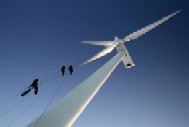 The wind turbine sector is growing quickly. The number and capacity of wind turbines has grown substantially in the last few years, and there is the prospect of greatly increased capacity as newly developed turbines are installed. This article will discuss the current requirements for the monitoring and inspection of wind turbines and explain the importance of regular inspections, carried out by accredited experts. There will be a discussion of the current position, based on the experience gained during the more than 2,000 wind turbine inspections carried out by GL Wind Energy.
The wind turbine sector is growing quickly. The number and capacity of wind turbines has grown substantially in the last few years, and there is the prospect of greatly increased capacity as newly developed turbines are installed. This article will discuss the current requirements for the monitoring and inspection of wind turbines and explain the importance of regular inspections, carried out by accredited experts. There will be a discussion of the current position, based on the experience gained during the more than 2,000 wind turbine inspections carried out by GL Wind Energy.By Torsten Muuss, Germanischer Lloyd Industrial Services, Germany
- Category: Articles
Rethinking Sodar for Wind Site Profiling
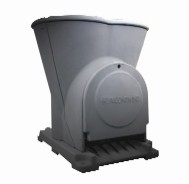 Accurate assessment of the resource at potential wind-energy sites is becoming more critical. The 60m met towers most commonly used for site assessment are decreasingly effective as turbines grow taller. Sodar devices, which measure wind speed and direction at any height up to about 200m, are a potential solution. Although manned sodar products are now common for short-term profiling, they have many shortcomings for long-term assessment. In this article, the author describes the innovations of Second Wind's Triton sonic wind profiler, which was designed to replace met masts for many assessment applications.
Accurate assessment of the resource at potential wind-energy sites is becoming more critical. The 60m met towers most commonly used for site assessment are decreasingly effective as turbines grow taller. Sodar devices, which measure wind speed and direction at any height up to about 200m, are a potential solution. Although manned sodar products are now common for short-term profiling, they have many shortcomings for long-term assessment. In this article, the author describes the innovations of Second Wind's Triton sonic wind profiler, which was designed to replace met masts for many assessment applications.By Walter Sass, CEO and Chief Engineer at Second Wind, USA
- Category: Articles
Legal Challenges Facing Wind Power Can be a Breeze with Proper Planning
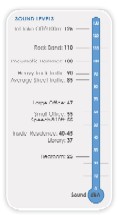 Rapid growth in the US wind industry is increasingly placing wind farm developments closer to where people live and work, escalating chances for development conflicts. An understanding of the uncertain regulatory climate within the USA, along with planning and good communication, can go a long way to avoiding the conflicts and legal challenges that can easily derail a project. The purpose of this article is to describe the existing US domestic wind farm development landscape and outline issues to consider before and during wind energy projects. As a second component, this article addresses ways to work proactively with communities to avoid conflict, as well as outlining legal defence strategies should nuisance lawsuits arise.
Rapid growth in the US wind industry is increasingly placing wind farm developments closer to where people live and work, escalating chances for development conflicts. An understanding of the uncertain regulatory climate within the USA, along with planning and good communication, can go a long way to avoiding the conflicts and legal challenges that can easily derail a project. The purpose of this article is to describe the existing US domestic wind farm development landscape and outline issues to consider before and during wind energy projects. As a second component, this article addresses ways to work proactively with communities to avoid conflict, as well as outlining legal defence strategies should nuisance lawsuits arise.
By Trey Cox, Attorney, Lynn Tillotson & Pinker, Dallas, Texas
.
 Rapid growth in the US wind industry is increasingly placing wind farm developments closer to where people live and work, escalating chances for development conflicts. An understanding of the uncertain regulatory climate within the USA, along with planning and good communication, can go a long way to avoiding the conflicts and legal challenges that can easily derail a project. The purpose of this article is to describe the existing US domestic wind farm development landscape and outline issues to consider before and during wind energy projects. As a second component, this article addresses ways to work proactively with communities to avoid conflict, as well as outlining legal defence strategies should nuisance lawsuits arise.
Rapid growth in the US wind industry is increasingly placing wind farm developments closer to where people live and work, escalating chances for development conflicts. An understanding of the uncertain regulatory climate within the USA, along with planning and good communication, can go a long way to avoiding the conflicts and legal challenges that can easily derail a project. The purpose of this article is to describe the existing US domestic wind farm development landscape and outline issues to consider before and during wind energy projects. As a second component, this article addresses ways to work proactively with communities to avoid conflict, as well as outlining legal defence strategies should nuisance lawsuits arise.By Trey Cox, Attorney, Lynn Tillotson & Pinker, Dallas, Texas
- Category: Articles
New Special Grease for All Rolling Bearing Applications in Wind Power
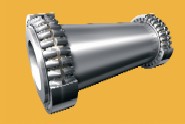 As the various rolling bearings in a wind power plant operate under very different conditions, it would appear that the use of different lubricants, maybe even from different manufacturers, is a must. For the operator, this means complex logistics and costly storage, but also the risk of a wrong lubricant being used by mistake, and a generally inefficient use of resources. However, a new speciality grease from Klüber Lubrication, Klüberplex BEM 41-141, can be used for the lubrication of all rolling bearings in a wind power plant. This grease not only meets the requirements of the main bearing, generator bearing, yaw bearings and rotor blade pitch bearings without restriction but also helps to improve operational reliability of the power station. If in addition the white adhesive lubricant Klüberplex AG 11-462 is used for the open yaw and pitch adjustment gears, only two lubricants will be required to supply all friction points in a wind power plant that requires grease lubrication.
As the various rolling bearings in a wind power plant operate under very different conditions, it would appear that the use of different lubricants, maybe even from different manufacturers, is a must. For the operator, this means complex logistics and costly storage, but also the risk of a wrong lubricant being used by mistake, and a generally inefficient use of resources. However, a new speciality grease from Klüber Lubrication, Klüberplex BEM 41-141, can be used for the lubrication of all rolling bearings in a wind power plant. This grease not only meets the requirements of the main bearing, generator bearing, yaw bearings and rotor blade pitch bearings without restriction but also helps to improve operational reliability of the power station. If in addition the white adhesive lubricant Klüberplex AG 11-462 is used for the open yaw and pitch adjustment gears, only two lubricants will be required to supply all friction points in a wind power plant that requires grease lubrication.By Peter Mages, Industry Group Manager Marketing and Application Engineering, and Ari-Pekka Holm, Global Accounts Manager Wind Energy, Klüber Lubrication München KG, Germany
- Hull (Massachusetts, USA) Offshore Wind Project
- Wind Resource Measurement by Laser Anemometry
- Filling a Need for a New Tower Design
- Improvements in Wind Power Prediction
- What's Your Transformer Got in the Tank?
- Financing Wind in Eastern Europe
- Dispatchable Wind
- The AXTRA Turbine
- Maritime and Marine Risk Assessment of Calamitous Oil Spills
- Motorwind
- Cracks at Foundations
- Predictive Maintenance Services
- Long-Duration Wind (Aero) Generator Back-Up
- Magenn Air Rotor System (MARS)
- Energy Prediction Uncertainty
- Demand Response
- Can Wind Energy and Radio Co-exist?
- Wind Power Generation in Sri Lanka
- The European Offshore Supergrid
- Wind Energy Forecasting in Ireland
- Reliable Ultimate Loads for Wind Turbines
- A Computational Tool to Aid the Electric Power Utilities
- Clipper’s Liberty Turbine
- Reducing Dynamic Loading of Towers
- Wind Turbines and Earthquakes
- Generating Wind Energy Using Kites
- Technology to Catch the Wind
- Sahara Wind’s Integrated Development Approach
- Wind Energy and Hydrogen Balancing
- Damage on Wind Turbines



